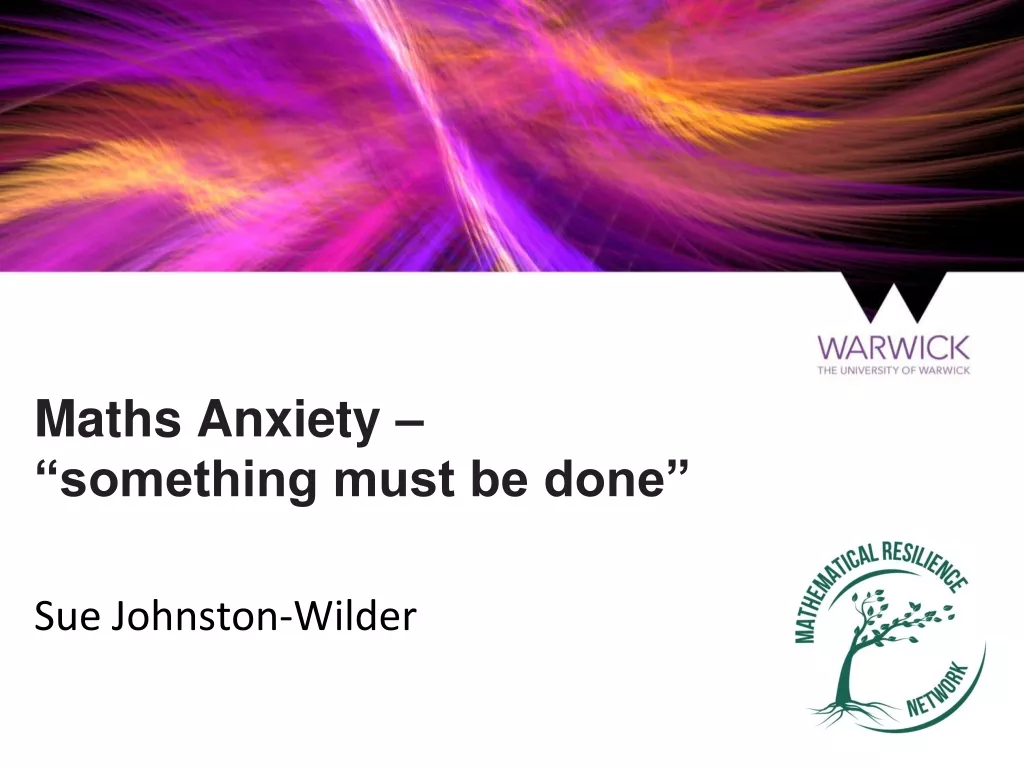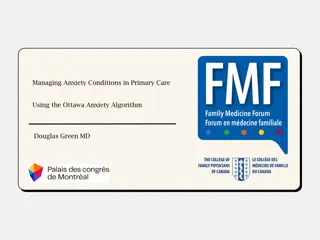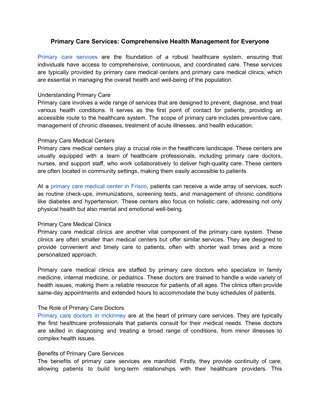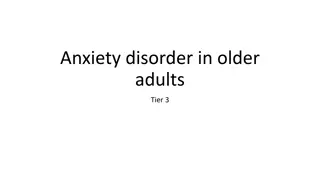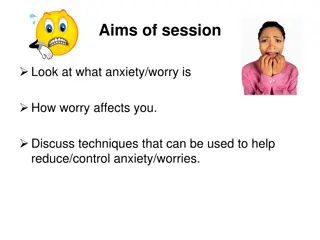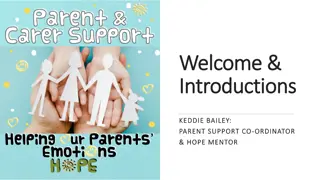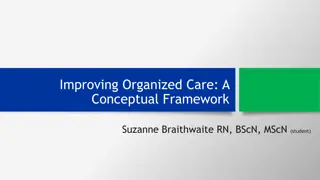
Collaborative Approach to Anxiety Care: Understanding Provider Role in Treatment
Learn about the collaborative approach to treating clients experiencing anxiety, focusing on the primary care provider's role in delivering individualized nursing care with a systematic approach for effective outcomes. Considerations for creating a calm and safe environment, managing symptoms, setting goals, and measuring success are highlighted.
Download Presentation

Please find below an Image/Link to download the presentation.
The content on the website is provided AS IS for your information and personal use only. It may not be sold, licensed, or shared on other websites without obtaining consent from the author. If you encounter any issues during the download, it is possible that the publisher has removed the file from their server.
You are allowed to download the files provided on this website for personal or commercial use, subject to the condition that they are used lawfully. All files are the property of their respective owners.
The content on the website is provided AS IS for your information and personal use only. It may not be sold, licensed, or shared on other websites without obtaining consent from the author.
E N D
Presentation Transcript
Treatment of Clients Experiencing Anxiety A Collaborative Approach to Care February 24, 2018 * Tex-CHIP Training Series
Understanding Provider Role in Treating Anxiety PRIMARY ROLE is providing Primary Care What does that mean? Standards specific to RN: Utilize a systematic approach to provide individualized, goal-directed, nursing care by: - Performing comprehensive nursing assessments - Making nursing dx that serve as basis for strategy of care - Develop plan of care based on assessment and nursing dx - Implement and - Evaluate responses to nursing interventions All within the context of SAFETY!
Considerations when Interacting with Clients Creating the environment that is calm/safe What contributes to that in a Primary care setting? IF benzodiazipines are being used as an anxiolytic (anti-anxiety agent), it is important to know HOW it is prescribed and HOW it is actually being used. PRN vs. Scheduled.
Goals & Related Interventions (examples) Interventions: Maintain a calm manner while interacting with the patient. Goals: The patient will demonstrate calmer behaviors resuming normal rate of speech able to interact and ask questions able to focus on the situation vital signs will return to normal ranges Acknowledge awareness of patient s anxiety Teach Self-Soothing techniques
Measuring Outcomes/ Success In Primary Care, it will depend on underlying sources. Is this a temporary, situational state or??? If the individual is in therapy, are they using newly learned coping strategies or self-management skills? Are they able to engage in all aspects of their care? Is the individual able to understand the connection with their physical processes and the brain? Examples with limbic system flight or fight and change in B/P or escalation of anxiety and increased cortisol which can cause a disruption in the metabolic system etc.
Communication from Counselors SBAR Imminent Safety Concerns Education/Information In PC setting, nurses are often generalists What is working in the moment Identify triggers to anxiety Are there things that need reinforced specific skills or coping strategies Keeping in mind the connection of anxiety to suicide risk safe environment and consideration for means restriction

